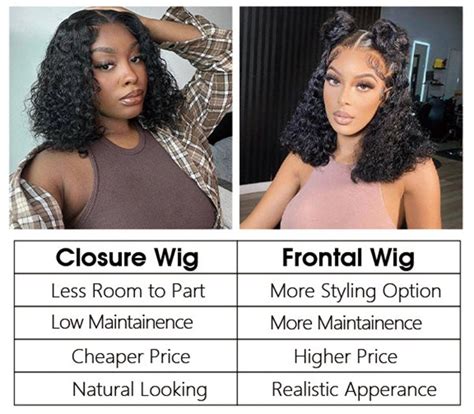Introduction
In the ever-evolving world of hair extensions, two prominent techniques dominate the market: frontals and closures. While both offer unique advantages, understanding their distinct features is crucial for making an informed decision. Join us as we delve into a comprehensive analysis of frontals vs. closures, empowering you to choose the perfect solution for your desired look.

What is a Frontal?
A frontal is a large hair extension piece that covers the entire front of the head, from ear to ear. It ranges in size from 13×4 inches to 13×6 inches or even 13×7 inches, providing full coverage and a natural-looking hairline. Frontals allow for maximum versatility in styling, including ponytails, buns, and intricate partings.
What is a Closure?
A closure is a smaller hair extension piece that covers a specific area of the head, typically measuring 4×4 inches or 5×5 inches. It is designed to blend with natural hair, creating the illusion of a natural part. Closures come in a variety of textures and colors, making them suitable for most hair types.
Key Differences: Frontal vs. Closure
| Feature | Frontal | Closure |
|---|---|---|
| Size | Covers entire front of head | Covers a specific area |
| Coverage | Full coverage | Partial coverage |
| Versatility | Maximum styling options | Limited styling options |
| Cost | More expensive | Less expensive |
| Installation Time | Longer | Shorter |
Choosing the Right Option for You
The choice between a frontal and a closure depends on your individual needs and preferences. Consider the following factors:
- Desired Coverage: If you prefer full coverage with endless styling options, a frontal is the better choice. For a more subtle and cost-effective option, a closure may suffice.
- Hairline Customization: Frontals offer the most flexibility for customizing the hairline, allowing you to create a natural-looking appearance.
- Budget: Frontals tend to be more expensive due to their larger size and versatility. Closures are a budget-friendly alternative.
- Maintenance: Frontals require more maintenance than closures, as they cover a larger area and may require more frequent touch-ups.
Benefits of Frontals and Closures
Frontals:
- Natural-looking hairline
- Provides full coverage
- Maximum styling versatility
- Enhances confidence
Closures:
- Cost-effective
- Partial coverage blends seamlessly
- Low maintenance
- Convenient for quick and easy installs
Applications Beyond Hair Extensions
The innovative concept of frontals and closures has inspired creative applications beyond traditional hair extensions. Here are a few innovative ideas:
- Headcovering: Frontals can serve as a stylish and comfortable headcovering for individuals facing hair loss or thinning.
- Medical Prosthetics: Closures can be used to create natural-looking prosthetics for reconstructive surgery patients.
- Cosplay and Costume Design: Frontals and closures offer endless possibilities for enhancing costumes and creating realistic character transformations.
FAQs
1. Which is better, a frontal or a closure?
The best choice depends on your individual needs and preferences. Frontals offer more coverage and versatility, while closures are more affordable and require less maintenance.
2. How much do frontals and closures cost?
Frontal costs can range from $100 to $500, while closures typically cost between $50 and $200. The price varies depending on the texture, color, and brand.
3. How long do frontals and closures last?
With proper care and maintenance, frontals and closures can last between 6 and 12 months. They may need to be replaced or repaired as they grow out or become damaged.
4. Can I install a frontal or closure myself?
While possible, installing a frontal or closure correctly requires professional expertise to achieve a natural and secure fit.
5. Do frontals and closures damage hair?
When installed and maintained properly, frontals and closures do not damage natural hair. However, excessive manipulation or poor installation practices can lead to breakage or thinning.
6. How do I care for frontals and closures?
- Use sulfate-free shampoos and conditioners
- Deep condition regularly
- Avoid excessive heat styling
- Handle with care to prevent tangling or breakage
Conclusion
The decision between a frontal and a closure is a personal one, influenced by your aesthetic preferences, budget, and maintenance routine. By understanding the key differences, benefits, and applications of these hair extension techniques, you can make an informed choice that empowers you to achieve your desired hair goals. Whether you opt for a frontal’s versatile coverage or a closure’s cost-effective simplicity, both options offer unique advantages that enhance your beauty and confidence.
